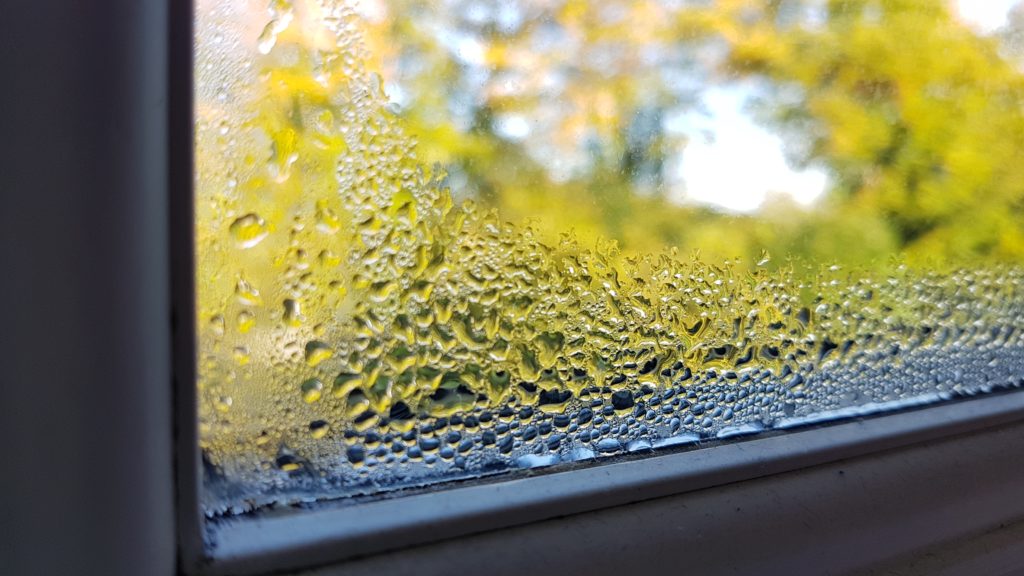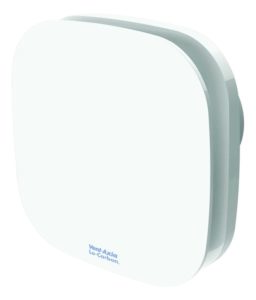 Following the introduction of the Homes Act, social housing landlords are increasingly aware of the importance of effective ventilation and good indoor air quality (IAQ) in their housing stock. Additionally, a recent report by the Royal College of Paediatrics and Child Health (RCPCH) and the Royal College of Physicians further illustrates its vital importance, citing growing evidence linking indoor air pollution to a number of childhood health problems. Tom Wodcke, Product Marketing Manager at Vent-Axia, looks at this report and explains how improving ventilation is key to boosting IAQ and resident health.
Following the introduction of the Homes Act, social housing landlords are increasingly aware of the importance of effective ventilation and good indoor air quality (IAQ) in their housing stock. Additionally, a recent report by the Royal College of Paediatrics and Child Health (RCPCH) and the Royal College of Physicians further illustrates its vital importance, citing growing evidence linking indoor air pollution to a number of childhood health problems. Tom Wodcke, Product Marketing Manager at Vent-Axia, looks at this report and explains how improving ventilation is key to boosting IAQ and resident health.
The introduction of the Homes Act set in stone the importance of effective ventilation in social housing. However, since then evidence has continued to grow linking air pollution to health problems. The latest joint report by the RCPCH and the Royal College of Physicians ‘The inside story: Health effects of indoor air quality on children and young people’ is specifically focused on the health impact of IAQ on children and young people. A comprehensive landmark report, the document involved a systematic review of 221 studies.
This new report shows evidence linking indoor air pollution to a number of childhood health and behavioural problems including low birth weight and pre-term birth; respiratory problems; eczema; skin and eye irritation; greater hyperactivity, impulsivity and inattention; reduced cognitive performance; and difficulty sleeping. Within the document, sources of indoor air pollution include: cooking; smoking; damp; the burning of fossil fuels and wood; chemicals from building materials; furnishings; aerosol sprays; and cleaning products. Interestingly, the document also warns that IAQ tends to be worse in low quality housing where properties are poorly ventilated. And with 3.6 million children in the UK living in such housing this is a major issue that needs addressing.
 Duty of care
Duty of care
Since indoor air pollution is an important issue, the report recommends where the building owners have a duty of care towards occupants, such as with social housing, there should be standards for maintaining IAQ. Recommendations include that local authorities should have the power to require improvements in schools and houses where air quality fails to meet minimum standards. To do this, it advises revising the Building Regulations by: setting robust legally binding performance standards for IAQ including ventilation rates, maximum concentration levels for specific pollutants, labelling materials and testing appliances; introducing air quality tests when local authority construction is complete and before building sign-off; checking compliance tests after the construction stages and assessment of buildings once occupied and in use.
Further confirming the significance of IAQ’s impact on health the Royal Colleges’ report also calls for a cross-governmental committee to co-ordinate working in health, environment, education and homes for IAQ and recommends developing a national strategy and policy for IAQ with a designated Government Cabinet lead. Interestingly there is also a recommendation for the inclusion of IAQ within Air Quality Plans mandated by Government.
Other recommendations that would affect social housing include calls for local authorities to offer free indoor air testing for residents, as well as a national fund to support improvements for low income families. Meanwhile, to evaluate IAQ risks in homes and schools, there is also a call for improved resources for Environmental Health Officers; an update of existing instruments, such as the Housing Health and Safety Rating Systems to include more evidence on a wider range on indoor air pollutants; and calls for a ‘clean house’ check-up system similar to current Energy Performance Certificates and regulation of air-cleaning devices.
NICE
The Royal Colleges’ report followed hot on the heels of the publication of the National Institute of Health and Care Excellence (NICE) latest guidance ‘Indoor Air Quality at Home’, therefore it is no surprise the Royal College’s report advises local authorities to follow NICE guidance. This recent guidance from NICE confirms the critical role ventilation plays in removing potential pollutants and improving IAQ and advises people to ensure rooms are well ventilated by extractor fans, trickle vents, cooker hoods or by opening windows, especially when undertaking activities that lead to poor IAQ.
Damp and condensation can be a major problem in many homes. A key recommendation within the NICE document is advising the public on how to reduce this by using background ventilation, using mechanical ventilation where possible; opening windows, where possible and safe, to provide temporary increased ventilation; avoiding moisture producing activities such as drying clothes inside; repairing sources of water damage; and removing any residual moisture when it forms.
For local authorities the NICE guidance recommends prioritising IAQ and embedding plans for improving it into an existing plan or strategy. It also emphasises the need for a balanced approach to ventilation, insulation and heating to achieve good IAQ. Landlords are given guidance on how to ensure their properties have good IAQ and are advised to undertake maintenance programmes for ventilation. The document goes on to advise private and social tenants to contact their landlord if ventilation is inadequate and to contact the local authority if no action is taken.

Solutions
So what solutions are available to local authorities looking to improve ventilation in their housing stock? For refurbishments, Positive Input Ventilation (PIV), such as Vent-Axia’s Lo-Carbon Pozidry Pro and PoziDry Compact Pro, works with the natural air infiltration, controlling the air path through the home, preventing the migration of damaging humidity and pollutants, such as VOCs. Other options include bathroom and kitchen extractor fans with the latest fans offering powerful, quiet, efficient ventilation while being quick and easy to install, low maintenance and reliable.
For example, there are continuous running filterless unitary fan available such as Vent-Axia’s intelligent Lo-Carbon Response 7. This type of fan boasts powerful, quiet, efficient ventilation, providing good IAQ. They also offer an ultra-low profile which is a big plus for social housing since they have a minimum impact in the home, allowing installation in tighter corners while achieving greater resident acceptability. For properties where a longer duct run is needed, variable speed fans with increased airflow performance are ideal as the fan speed can simply be turned up as required, providing efficient ventilation whilst still maintaining low noise levels. Meanwhile fans that have a digital control menu help speed up install and commissioning. A settings lock is also beneficial to prevent tampering.
But it’s not just about installing the right ventilation for each home. Maintenance is key in extending product life, lowering running costs, providing quieter running and cleaner air in homes. Where ventilation such as PIV and mechanical ventilation with heat recovery (MVHR) is installed, a planned maintenance schedule is essential. Vent-Axia recommends that filters should be checked every three to six months and a full service done every two years. Dirty filters lead to poor IAQ and can make ventilation systems inefficient.
This latest guidance from the Royal Colleges and NICE sets in stone the vital importance of good IAQ for avoiding a range of health issues for children and young people as well as other residents. And with a range of different mechanical ventilation options designed specifically for social housing available, housing providers should be able to find the right solution for each property. This will enable them to meet their duty of care to provide a habitable living environment, protecting both residents and housing stock from condensation and mould and providing a healthy home.
Find out more at www.vent-axia.com/social-housing









